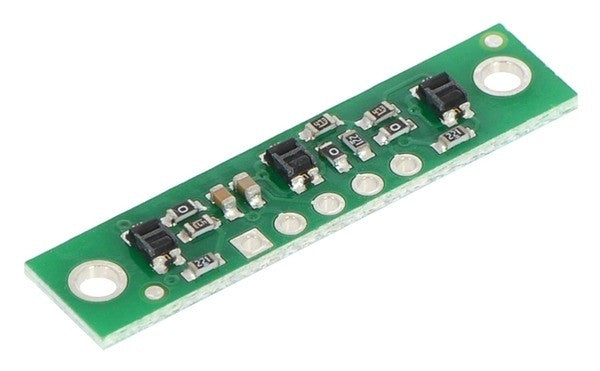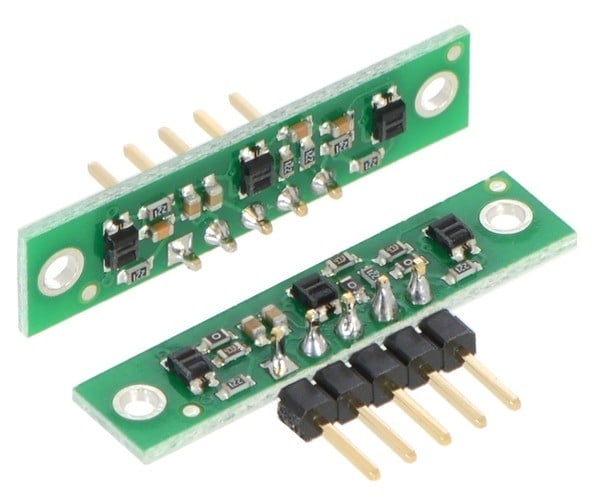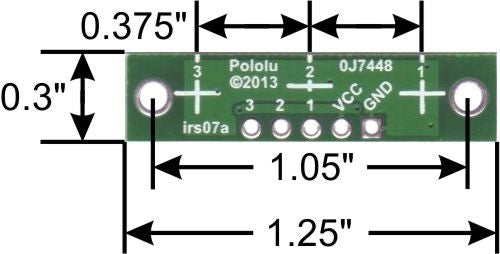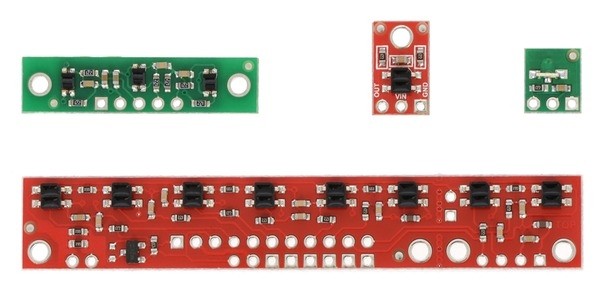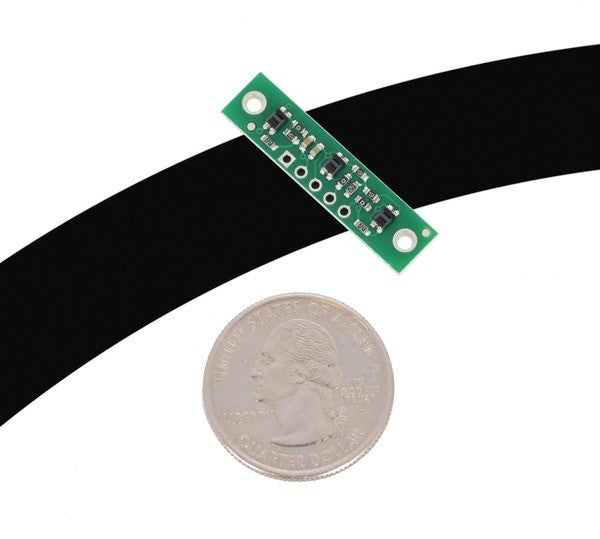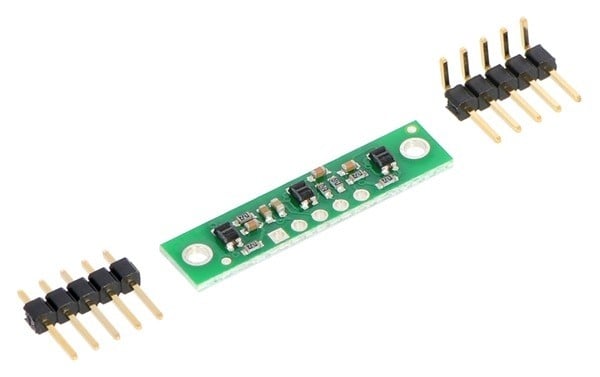Description
The QTR-3A reflectance sensor array requires analog inputs to take readings. The similar QTR-3RC reflectance sensor array is available with digital I/O-compatible outputs.
The QTR-3A reflectance sensor array is intended as a line sensor, but it can be used as a general-purpose proximity or reflectance sensor. The module is a convenient carrier for three IR emitter and receiver (phototransistor) pairs. With sensors spaced at intervals of 0.375? (9.525 mm) along of the board?s longer axis, this array works well as a minimal detector for line-following robots, as line-following courses are commonly made using 3/4? (19 mm) black electrical tape. The middle sensor is slightly offset along the short axis of the board.
Each phototransistor is connected to a pull-up resistor to form a voltage divider that produces an analog voltage output between 0 V and VCC (which is typically 5 V) as a function of the reflected IR. Lower output voltage is an indication of greater reflection.
- Dimensions: 32 mm × 8 mm × 3 mm (without header pins installed)
- Operating voltage: 5.0 V
- Supply current: 50 mA
- Output format: 3 digital pulse signals
- Optimal sensing distance: 3 mm
- Maximum recommended sensing distance: 6 mm
- Weight without header pins: 0.6 g
Interfacing with the QTR-3A Outputs:
There are several ways you can interface with the QTR-3A outputs:
- Use a microcontroller?s analog-to-digital converter (ADC) to measure the voltages.
- Use a comparator with an adjustable threshold to convert each analog voltage into a digital (i.e. black/white) signal that can be read by the digital I/O line of a microcontroller.
- Connect each output directly to a digital I/O line of a microcontroller and rely upon its internal comparator.
This last method will work if you are able to get high reflectance from your white surface as depicted in the left image, but will probably fail if you have a lower-reflectance signal profile like the one on the right. (Please note that these images show the output of a QTR-1A, which uses a sensor with slightly different characteristics than the ones on the QTR-3A.)


QTR-1A output 1/8" away from a QTR-1A output 3/8" away from a
spinning white disk with a black line on it. spinning white disk with a black line on it.
spinning white disk with a black line on it. spinning white disk with a black line on it.
Our Pololu AVR library provides functions that make it easy to use these sensors with Orangutan robot controllers; please see the QTR Reflectance Sensors section of our library command reference for more information. We also have a Arduino library for these sensors.
Included Components:
This module has two mounting holes intended for screws (not included); if the mounting holes are not needed, the ends of the PCB can be ground off to make the unit even smaller (less than 1? wide). The reflectance sensor array ships with a 1×5 straight male header strip and a1×5 right-angle male header strip as shown below. You can also solder wires, such as ribbon cable, directly to the pads for the smallest installation.
Documents:
Encrypted payment
Your payment information is processed securely. We do not store credit card details nor have access to your credit card information.
Additional information
Customs tariff number:
Country of origin:
This depends on where you are located. Once the order has been handed over to UPS, the delivery time in Germany is approx. 2-3 days, within Europe approx. 1 week.
We dispatch our articles with our shipping partner UPS.
If we have not yet answered your question, you can contact us and we will get back to you as soon as possible.
You might also like
Recently viewed

